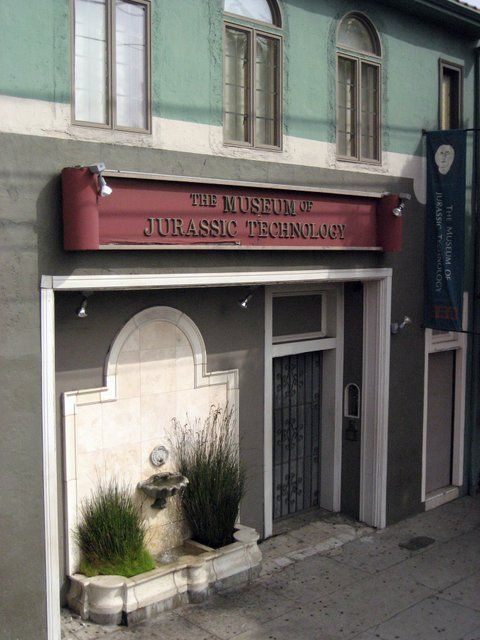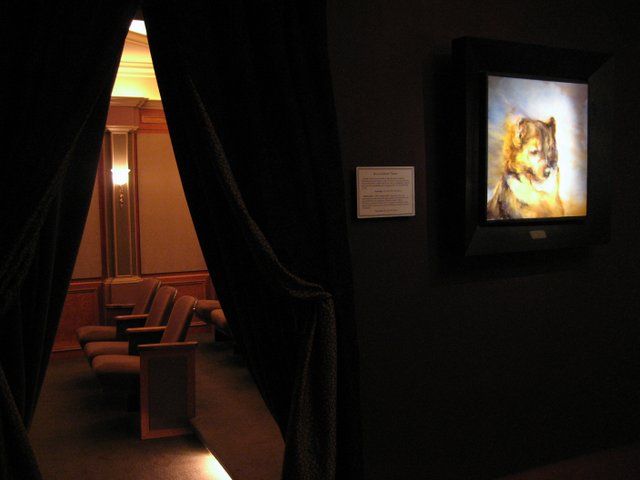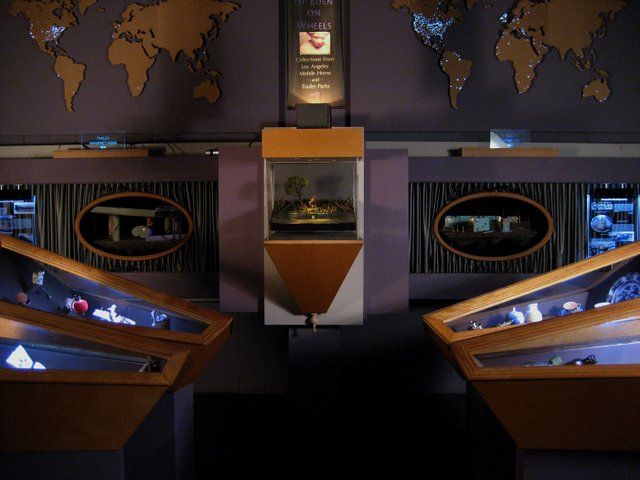Last Chance to Catch NYC's Holiday Notalgia Train
We met the voices of the NYC subway on our nostalgia ride this weekend!


My favorite stories make connections between things I wouldn’t otherwise have imagined could relate to each other. My favorite stories are true, but constructed. Putting something into a surprising context is similar to creating fiction. If we are to enter a book the way we enter a room, we don’t read on a straight line. We don’t start from the beginning. Stories in this room are objects on pedestals, and images on walls. Perhaps the book is a collection of stories with a title that is just as ambiguous as the connections between the topics, so we carry our body from one object to another, making up our own answers, and reading in a random order. If we need some kind of categorization, it comes from the building itself.
I always feel as if I am entering a book when I step inside The Museum of Jurassic Technology in Culver City. The inconspicuous building sits between a carpet installation company and a forensic lab on Venice Boulevard, and often tends to be discovered by surprise. It resembles something out of David Lynch, but what doesn’t in LA? Their collection includes Hagop Sandaldjian’s “Microminiature Sculptures,” seen through a long row of microscopes, mechanical diorama’s of opera sets, a display of animal horns (including one that supposedly grew out of a human woman’s head), and vintage medical illustrations. The mood ranges between playful–on the second floor there is an interactive exhibit of string figure games (including the popular playground activity “cat’s cradle” )–to deeply touching–painted portraits of the 1960s Soviet space dogs hang in a candlelit memorial entitled, “The Lives of Perfect Creatures.”
 The Museum’s inconspicuous entrance on Venice Boulevard in Culver City. Photograph courtesy of The Museum of Jurassic Technology.
The Museum’s inconspicuous entrance on Venice Boulevard in Culver City. Photograph courtesy of The Museum of Jurassic Technology.
It was founded in 1987 by David Wilson, who received a MacArthur Genius grant in 2001, and was the subject of Lawrence Weschler’s book Mr. Wilson’s Cabinet of Wonder. I can’t tell if the museum feels more like a creative writing project or a visual collage, using the inside of a building as its canvas. Exhibition titles such as “Life in the Extreme Ultraviolet,” or “The World is Bound in Secret Knots” read like poems connected to their more clinical item descriptions. “Garden of Eden on Wheels” entitles a display of model mobile homes and trailer parks from the Los Angeles area. It traces the history of the mobile home back to a depression era seamstress who constructed the first model based on the dimensions of Noah’s Ark. Each exhibit seems to evoke a common question: how does one piece of knowledge lead to another? For example, what lead this seamstress to her idea? Was it reading the Bible? Was it her surroundings during the early years of the 1930’s economic downturn that led to her desire for a mobile dwelling: a dwelling similar to Noah’s Ark, which was capable of adapting to changing environmental and social conditions?
 A portrait of a Soviet space dog from “The Lives of Perfect Creatures,” hangs next to the entrance to the Borzoi Kabinet Theater. Photograph courtesy of The Museum of Jurassic Technology.
A portrait of a Soviet space dog from “The Lives of Perfect Creatures,” hangs next to the entrance to the Borzoi Kabinet Theater. Photograph courtesy of The Museum of Jurassic Technology.
“No One May Ever Have the Same Knowledge Again,” is a display of letters to Mt. Wilson Observatory from both the educated and uneducated segments of the public. Most of them are expressions of awe at the observatory’s findings, but they also include notes from people sharing some earnest information that they thought the astronomers should know. The title quotes a New Zealand woman who wrote, “I believe I have some knowledge which you gentlemen should have. If I die my knowledge may die with me, and no one may ever have the same knowledge again.” The letters go on to state theories on physics, life on other planets, and the nature of the universe itself.
 “The Garden of Eden on Wheels” tells an creative history of mobile homes and trailer parks. Photograph courtesy of The Museum of Jurassic Technology.
“The Garden of Eden on Wheels” tells an creative history of mobile homes and trailer parks. Photograph courtesy of The Museum of Jurassic Technology.
Among the many metaphysical effects of the museum, it pushes me to think about how I read, of course, and about how I look at or use a museum (there is an introductory slide presentation about the history of museums chronicling 16th century natural history museums; Charles Wilson Peale’s first painting exhibits; and PT Barnum’s freak shows). Simply put, it also makes me think about how I think. How does the understanding of one person turn into a popular belief system? “Tell the Bees…Belief, Knowledge and Hypersymbolic Cognition,” is a collection of dioramas of outdated cures for common ailments and old belief systems that today we would call superstitions. These include ingesting ant eggs to fall out of love, inhaling duck’s breath to cure mouth and throat diseases, or eating mice on toast to control bed wetting. Before the viewer can write these off as humorous factoids, the exhibit notes that sometimes investigating cast aside beliefs can lead to important advances in the way we understand the world. A final display illustrates the discovery of penicillin, which was developed from mold.
In Mr. Wilson’s Cabinet of Wonder, Weschler researches every collection in the MoJT and finds that not all are based on actual fact. At the same time, some of the most bizarre displays turn out to be the true ones, such as the stink ant of Cameroon, which we learn becomes infected by a spore that grows slowly and violently into a unicorn-like horn out of the ant’s head. As is stated in the opening slide presentation, it was only in the 19th century that art museums were separated from historical and scientific exhibitions, so it seems fitting under the term, “Jurassic Technology” to forget the values we place on truth-verses-fiction, or science-verses-art for a moment while we move among the stories, under one roof.
 Laika from “The Lives of Perfect Creatures.” Photograph courtesy of The Museum of Jurassic Technology.
Laika from “The Lives of Perfect Creatures.” Photograph courtesy of The Museum of Jurassic Technology.
Get in touch with the author @untappeddale.
Subscribe to our newsletter